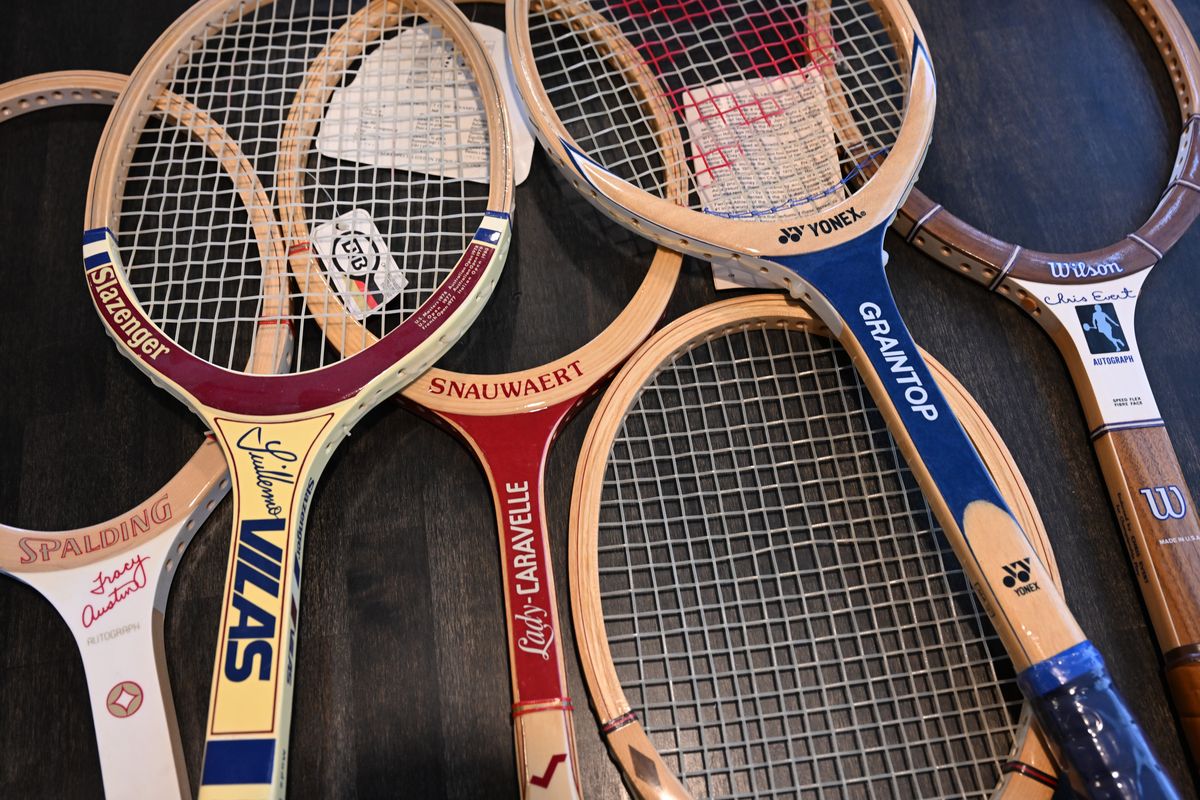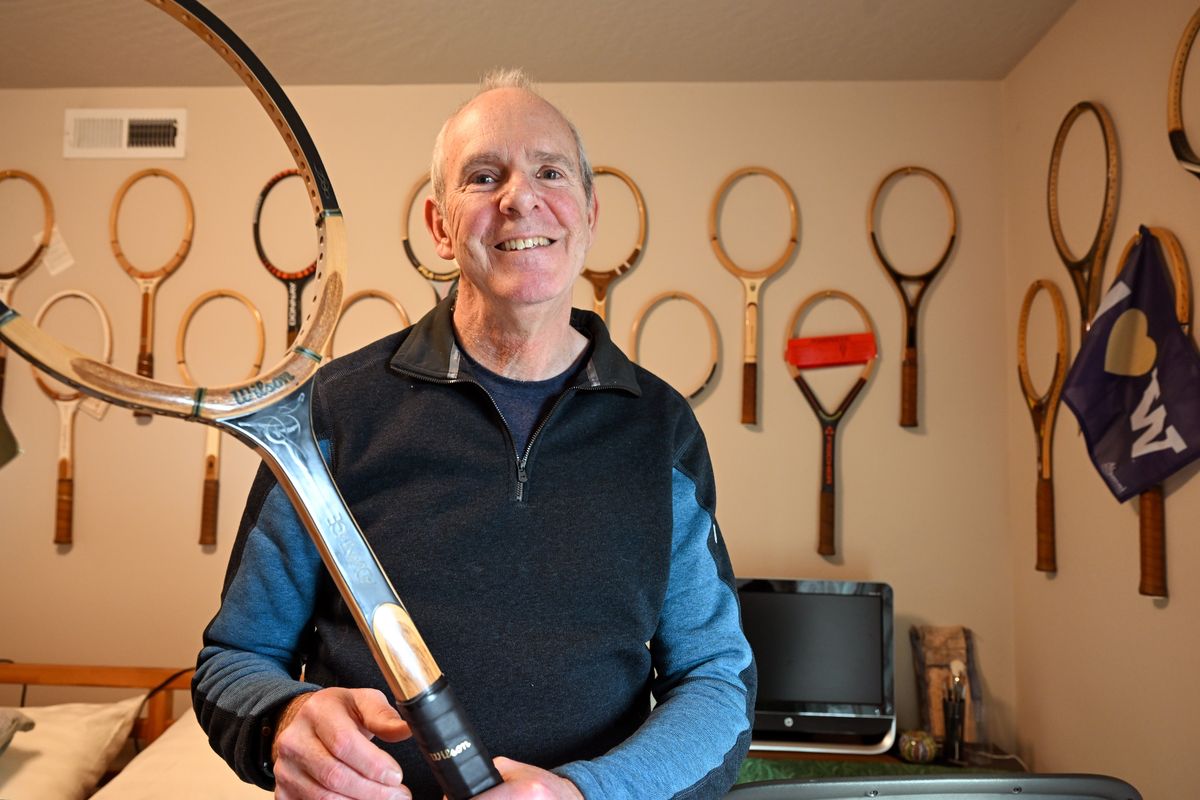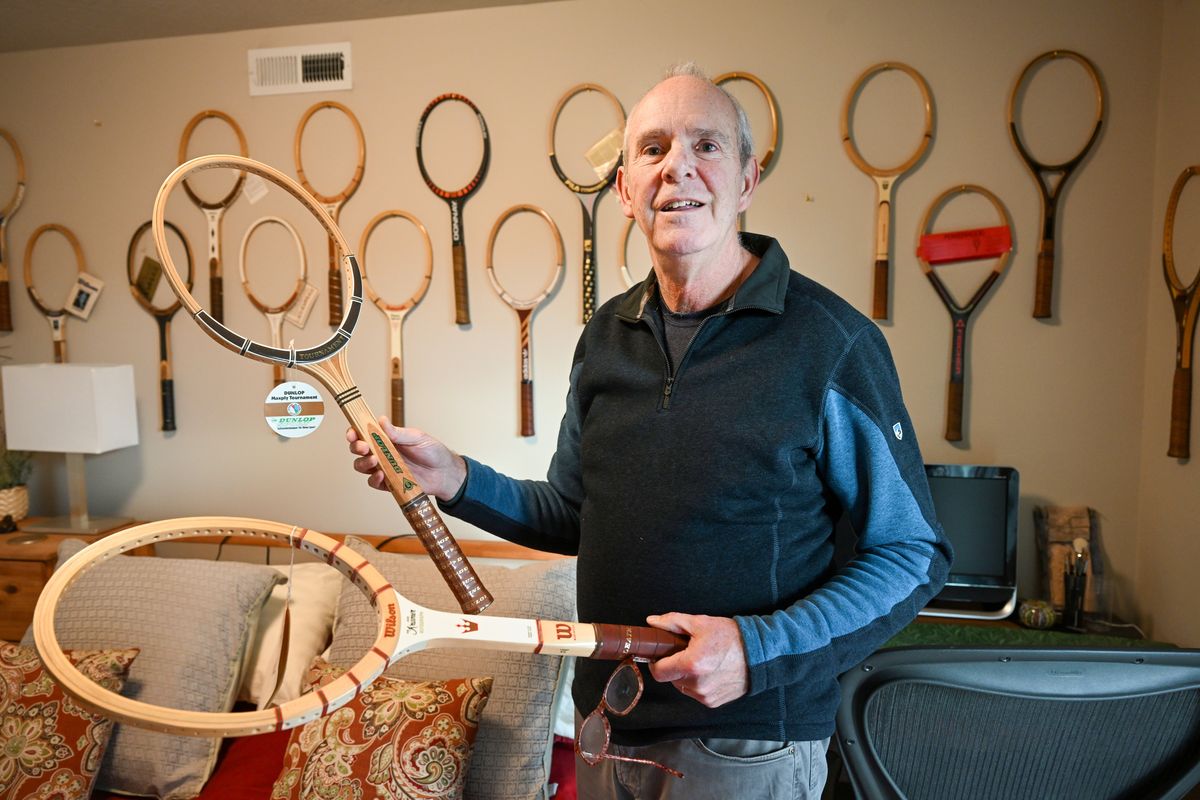The Collector: Judge serves up classics with wooden tennis racket collection
Fred Corbit, a federal bankruptcy judge by profession, collects classic wooden tennis rackets from the 1960s and 1970s, shown Jan. 2 at his Spokane home. He collects mostly mint, unstrung examples of the models used to win men’s and women’s championships in that era. (Jesse Tinsley/The Spokesman-Review)
Bankruptcy court Judge Fred Corbit spends a lot of time in court, but time on another type of court launched his collection.
Corbit has over 100 wooden tennis rackets, and 60 of them are in mint condition.
He played varsity tennis at Ferris High School, and his two sons also played competitive tennis.
“I started collecting them in the ’90s,” he said.
Wooden rackets were no longer being produced, so he scoured the internet and the newly launched eBay. He looked for items made in the late ’60s and early ’70s.
One of his first purchases was a Wilson Jack Kramer Autograph.
“This is what I played with in high school,” he said, holding the racket. “Pete Sampras wanted all his kids to learn to play with a Wilson Jack Kramer.”
As his collection grew, he decided to narrow his focus.
“My goal was to collect every wood racket from the late ’60s to the early ’70s that men or women won a championship with,” Corbit said. “I think I have them all.”
He’s got a Dunlop Maxply, the last wooden model John McEnroe used before switching to graphite. And a Donnay racket made in Belgium, favored by Bjorn Borg.
“Bjorn Borg was the last one to keep playing with wood,” he said.
Beautiful isn’t a word usually associated with sports equipment, but that’s how this collector describes the craft and workmanship of these items.
“The woodworking in these rackets is as good or better than the best wood furniture,” he said.
For example, a Davis Imperial features a walnut face, a laminated shaft made of ash or cherry and a leather-wrapped handle.
Most of his collection is unstrung – the strings take a beating and need to be replaced regularly, making it difficult to find a mint-condition strung racket.
While most of us are aware of brands like Spaulding, Fila, Head and Wilson, Corbit’s collection features some that might be unfamiliar – like an Italian Snauwaert Lady-Caravelle and a Slazenger from England.
His high school-era racket proved easy to collect because Wilson sold so many of them; more difficult to find were products made by smaller companies outside the U.S.
He picked up a Grays of Cambridge MatchMaster.
“This was probably the hardest to find,” Corbit said. “I bought it from someone in England. It may have never made it to the shops here.’
Its sleek blond shaft bears the imprint “Cambridge Craftsmen.” That’s the allure for this collector.
“The woodwork on these is so beautiful,” he said. “Someone sanded and laminated this. But the craftsmanship changed. An era ended.”
Indeed, from carefully crafted wood to metal to graphite, the old-world elegance of rackets gradually morphed with technology to become shiny utilitarian models.
Currently, Corbit plays with a graphite model, but every once in a while, he’ll talk his sons into playing a match with him using wooden rackets.
“It’s a different game with wood,” he said.
Like many collectors, he’s reluctant to choose a favorite.
“They’re all special to me.”
That’s because he appreciates the history and the craftsmanship of each item.
“I like to think I’m preserving something,” Corbit said. “To look at one of these beautiful rackets is a joy. Nobody is making these anymore. They’re examples of a craft that no longer exists.”



